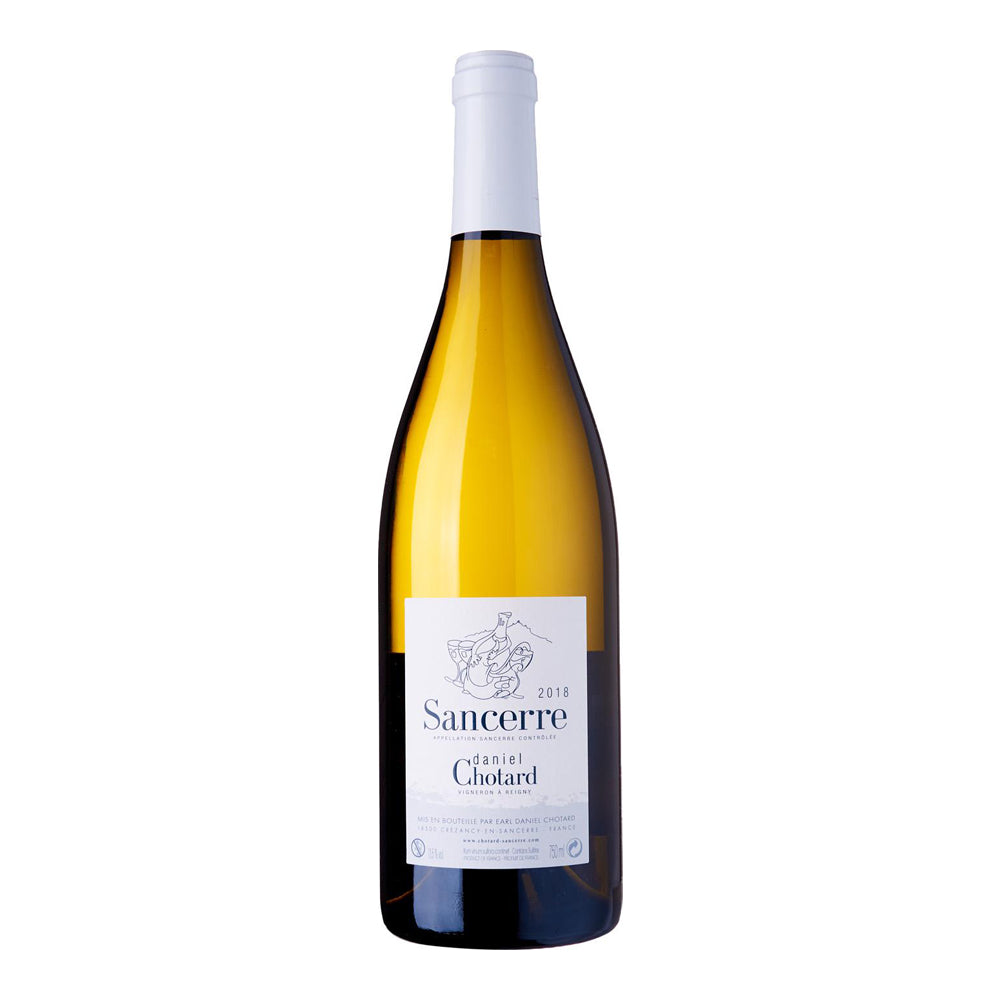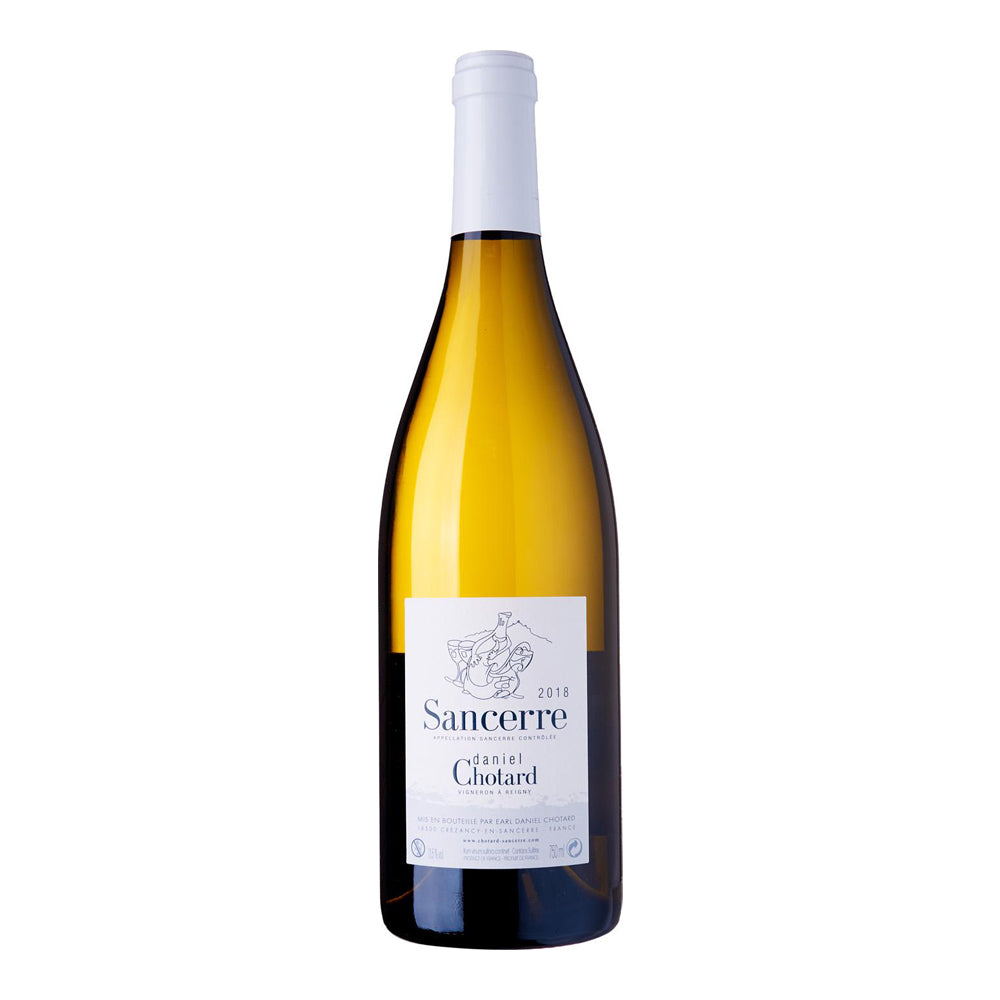

Daniel Chotard Sancerre
“Simon Chotard is the great revelation of Sancerre on the last four vintages. Out first of the class of school oenology from Toulouse, he gives to wines of the family domain wines a precision and a depth praiseworthy. Here vintages are of a high level and are good value for money” – La Revue du Vin de France
The Chotard family have been making wine for over 200 years, since 1789 and now the reigns are passed to Daniel’s son Simon, the latest in the dynasty. Domaine is in Crezancy-en-Sancerre – West of the appellation. Simon stopped using herbacides and pesticides. 2017 was 100% organic practices. Plan to go full Bio in 2019 vintage. Main exposition of vineyards are South, South East, South West. Vineyards age from 5 years to 70 years old.
SANCERRE BLANC 2019
Organic
Bottle Shot
Blend of 3 terriors, 1/3 of each. Caillottes – Valley – Small stones over Marl/Gravel = Stone fruit, florals. Terre Blanche on the Hills of Kimmeridgian Clay (same as Chablis) –=Tense, Richness, backbone + Griotte – Caillottes/Cris small stones over Terre Blanche = White flowers, Mineral.
100% hand picked. Only a small racking. He keeps a large % of lees for fermentation. Wild fermentation, 60% Fermentation in Steel tank, 20% Fermentation in Acaia barrels, 20% in French oak. No new barrels, only vapoured inside, no toasting. Earliest bottling after 8 months elevage in tank. Only Sulphured at bottling.
Notes on Acacia barrels
The wood of Acacia barrels vs Oak is a lot more porous, allowing micro-oxygenation of the wine during fermentation/elevage. With no toasting it allows development of aromas and body without imparting ‘oak’ flavour. It doesn’t hide the aromatics vs French Oak, or at least in Simon’s opinion.
Also it’s to be noted that when Simon made this wine for the first time his Grandfather visited the cellar and an ironic smile and commentary began. Marcel Henri reminded Simon that in his generation Acacia wood was regularly used in Sancerre as trees were readily found in the region. Simon particularly believes Acaia works well with the Clay/Limestone soils of Callottes and Griottes, helps the expression of the site.
